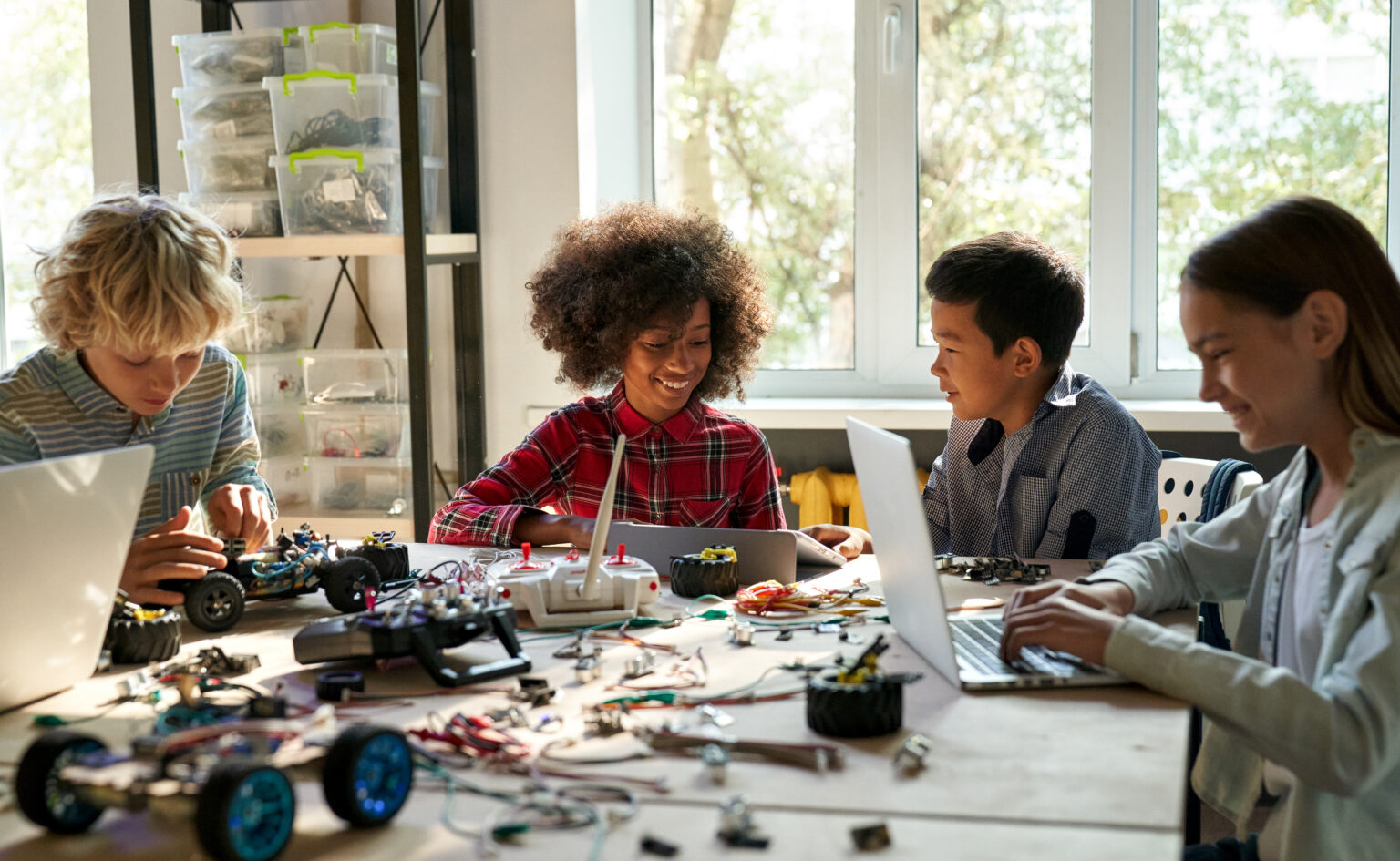
Revolutionizing Education: The Power of Integrating Technology to Leverage Mobility Introduction
In a world where technology has permeated every aspect of our lives, education stands as a crucial domain that has embraced its transformative potential. The integration of technology in schools to leverage mobility has heralded a new era of learning, redefining how students and educators interact with knowledge. This paradigm shift is not just about incorporating gadgets and digital tools into classrooms; it’s a revolution that is reshaping the way we teach, learn, and administrate in educational institutions.
The Evolving Landscape of Education
Traditional classrooms were once the primary spaces where knowledge was imparted, but today’s students are growing up in an interconnected digital world. As technology evolves, so must education. Integrating technology has opened up a plethora of opportunities that extend the boundaries of learning beyond the confines of physical classrooms. With the advent of smartphones, tablets, and laptops, students have access to an unimaginable wealth of information at their fingertips. This digital revolution is turning the tides of education, offering a more personalized and dynamic approach to learning.
Empowering Learning Through Mobility
One of the most significant advantages of integrating technology in education is the mobility it offers. With mobile devices becoming an integral part of daily life, it only makes sense to harness their potential for learning. The shift from traditional textbooks to e-books and interactive multimedia content allows students to access learning materials anytime and anywhere. The flexibility of learning on the go empowers students to manage their schedules better and engage with educational content in a manner that suits their individual preferences and learning styles. Moreover, educational institutes can easily leverage mobility by implementing MDM solution for schools.
The Rise of Remote Learning
The integration of technology has had a profound impact on remote learning. The global COVID-19 pandemic acted as a catalyst, accelerating the adoption of remote learning tools and platforms. Virtual classrooms, video conferencing, and collaboration tools have bridged the physical gap between students and teachers. Remote learning has not only provided a solution during crises but has also paved the way for innovative teaching methodologies like the flipped classroom model. Students can now engage with pre-recorded lectures and instructional content at their own pace, reserving in-person class time for discussions and interactive activities. Teachers can even make sure that students’ don’t access any other application or website apart from what’s essential, by enabling Android kiosk mode.
Transforming Collaboration and Interaction
Technology-driven mobility has brought about a paradigm shift in the way students collaborate and interact. Digital platforms facilitate seamless communication and real-time collaboration, transcending geographical boundaries. Through virtual classrooms and online discussion forums, students can engage in meaningful debates, share ideas, and work on group projects with peers from around the world. This interconnectedness fosters a global perspective and prepares students for the challenges of an increasingly interconnected world.
The Personalized Learning Experience
Integrating technology has allowed educators to move away from the one-size-fits-all approach to education. Adaptive learning platforms utilize data analytics to tailor learning experiences to individual students’ needs, learning styles, and paces. These platforms identify areas of strengths and weaknesses, enabling teachers to provide targeted interventions and personalized feedback. The result is a more effective and engaging learning journey that maximizes each student’s potential.
Efficiency in Administration and Communication
Beyond the classroom, technology has streamlined administrative tasks, benefiting both educators and administrators. From attendance tracking to grade management, technology-driven solutions reduce paperwork and manual labor. School management systems and communication platforms facilitate seamless interaction between teachers, students, and parents. Parents can receive updates on their child’s progress, assignments, and school events, promoting a stronger home-school connection.
Lifelong Learning and Professional Development
The integration of technology has also transformed professional development for educators. Online webinars, workshops, and courses provide teachers with opportunities to enhance their skills and stay updated with the latest teaching methodologies and trends. This continuous learning cycle ensures that educators remain effective and adaptable in a rapidly changing educational landscape.
Cultivating a Global Perspective
Mobility-enabled technology is erasing geographical boundaries and fostering cross-cultural exchanges. Virtual exchanges and international collaborations introduce students to diverse perspectives and cultural experiences. This exposure prepares them for a globalized world, instilling empathy, open-mindedness, and the ability to collaborate across cultures.
Challenges and Considerations
While the integration of technology in education brings about numerous benefits, it also poses challenges. Issues such as the digital divide, data privacy concerns, and the potential for overreliance on technology must be carefully navigated. Striking the right balance between technology and traditional teaching methodologies is crucial to ensure that technology enhances, rather than replaces, valuable aspects of education.
Conclusion
The integration of technology to leverage mobility in education marks a monumental shift in how we perceive and deliver knowledge. This revolution is not just about the gadgets in our hands; it’s about empowering students with the tools they need to thrive in an ever-evolving digital landscape. The mobility-driven approach to education is breaking down barriers, promoting collaboration, personalizing learning experiences, and preparing students for a future where adaptability and technological literacy are paramount. As technology continues to evolve, the journey of integrating it into education is a dynamic one, and its transformative power will undoubtedly shape the education of tomorrow.







